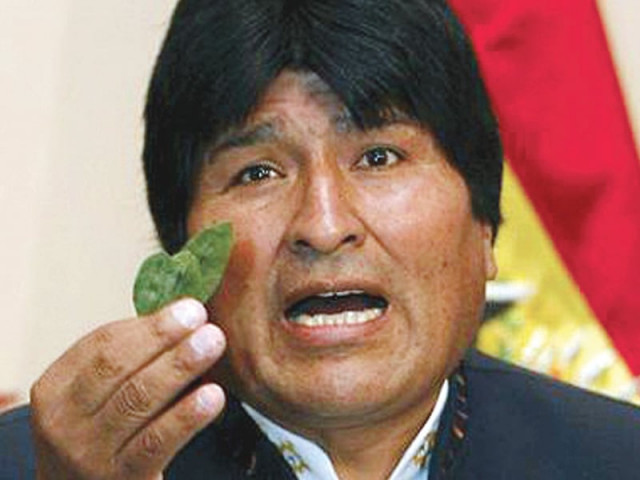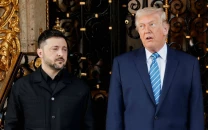A history of coke: Nothing to sniff at
The coca leaf and the cocaine that is produced from it have had a long and tumultuous history.

A history of coke: Nothing to sniff at
South American Indians have grown various varieties of the Erythroxylum coca or coca plant for thousands, or perhaps tens of thousands of years. While coca was officially reserved for Incan royalty, evidence shows that it was widely chewed by the common people as well. It was used for religious, medicinal social and military purposes, and was renowned for its ability to ward off fatigue, suppress appetite and provide the energy needed to cope with living in the high altitudes of the Andean mountains. The vitamins and minerals present in the coca leaves also made it a useful dietary supplement. The practice of chewing coca leaves continues to this day, with Bolivian President Evo Morales being a leading proponent.
FROM ‘GIFT OF THE GODS’ TO ‘AGENT OF THE DEVIL’
When the Spanish conquistadors arrived in South America, they initially banned coca as ‘an evil agent of the devil.’ Once they realised that their Indian subjects would not work in the mines without their dose of coca, moral concerns gave way to monetary imperatives and the Spanish conquerors decided to allow coca chewing, even going so far as to tax the crop.
EAT, DRINK AND GET WIRED
It wasn’t until 1863, that coca reached Europe in a big way. A Corsican chemist Angelo Mariani heard of the properties of this plant and thought it would help make his fortune – but figured he wouldn’t be able to get Europeans to chew it. Instead, he decided to mix it with wine, which was already socially acceptable and could disguise the taste of coca. He came up with Vin Mariani – a coca wine which instantly became a huge hit. Inventor Thomas Edison and playwright Henrik Ibsen praised it and Pope Leo XIII awarded Mariani a papal gold medal. Soon there were a host of coca products, from lozenges to tea.
THE FREUDIAN SNIFF
Research on the effects of coca continued, with its military application being of special interest to high authorities. Finally, cocaine hydrochloride, the active ingredient, was isolated and made available at pharmacies for ‘medical’ purposes. But cocaine as we know it was introduced to society at large by a 29 year old medical student named…Sigmund Freud. Apart from being the ‘father of psychoanalysis’, Freud is also probably the first well-known cocaine addict in history. Trying it on himself, he soon began to send it to his family and friends and started to prescribe it to his patients for everything from flatulence to depression. He even sent some to his fiancé, writing: ‘Woe to you, my Princess, when I come... you shall see who is the stronger, a gentle girl who doesn’t eat enough or a big wild man who has cocaine in his body.’ Cocaine also became the drug of choice for a great many writers and artists and began to feature in literature. Arthur Conan Doyle’s character Sherlock Holmes used cocaine extensively, and Robert Louis Stevenson wrote The Strange case of Dr Jekyll and Mr Hyde while on a six day cocaine binge.
COCAINE AS A CURE-ALL…AND A CURSE
The pharmaceutical industry loved it. Cocaine was the ‘miracle cure’ they had been waiting for, and suddenly the market was filled with tonics, syrups and sprays that contained cocaine. Prominent among these were Rayno’s Hay Fever remedy, a pure cocaine solution, and Lloyd’s cocaine toothache drops for children. By 1900, cocaine was in the top five pharmaceutical products in the US and was selling for around $2.50 per gram. But this is also around the same time that the first real wave of cocaine addiction hit, exacerbated by the practice of prescribing cocaine as a cure for morphine addiction. With deaths due to recreational cocaine abuse overtaking those due to medical misadventure, the world began to realise that there was a problem here. Unsurprisingly, many cocaine addicts were in the medical profession, with as many as 30% of cocaine addicts in the US circa 1901 being dentists.
BANNING COCAINE
Over the next few years, the American public started to get concerned about cocaine’s addictive nature, and public pressure eventually led to legislation. Cocaine was added to the list of narcotics to be outlawed by the passing of The Dangerous Drug Act of 1920, though it remained available at some pharmacies and in many products. The British, on the other hand, were not so keen to ban cocaine, as they were afraid such a ban on one addictive drug may lead to action against opium, from which they earned huge profits by selling it to the Chinese. The case in America was different, with public pressure having forced Coca-Cola to remove cocaine from its product as early as 1903.
THE REAL THING?
That’s right, Coca Cola once contained actual cocaine. In the 1880s, an Atlanta-based chemist named John Pemberton came up with a liquid tonic containing caffeine, and alcohol, which he names Coca-Cola (Coca for the Cocaine and Cola for the Kola nuts from which caffeine was obtained. However, he soon fell ill due to his morphine addiction and sold the formula to Asa Candler, owner of an Atlanta drug store chain for $2,300. When he dies 30 years later, Candler was worth $50 million. The original formula is estimated to have contained almost 9 milligrams of cocaine per glass. Three Cokes would provide roughly 30 milligrams of cocaine, which compares with the 20 to 30 milligrams normally “snorted” in a day by a contemporary cocaine user. However, when the US Congress passed the Pure Food and Drugs Law in 1906, the highly religious Candler removed the cocaine from the product, sending the coca leaves to another company for chemically extracting the cocaine and sending the ‘safe’ pulp to his factories.
WAR WITHOUT END
Today, the illegal cocaine trade is estimated to be a multi-trillion dollar industry, fed by seemingly inexhaustible global demand. The economies of several South American countries have been seriously subverted by the rise of the parallel narco-economy and its global trade has led to the rise of narco-barons like the infamous (and deceased) Pablo Escobar of Colombia. Today, Mexican gangs are thought to be at the forefront of the cocaine trade, acting as the main buyers and shippers of South American cocaine, and are considered a serious security threat for the Mexican government. The United States currently tops the world in cocaine use, with consumption estimated at 457 metric tons a year in 2007. The extent of the demand can be gauged by the fact that in 2009, a survey by a University of Massachusetts professor estimated that up to 90% of currency notes in major American cities have traces of cocaine.
Published in The Express Tribune, Sunday Magazine, September 18th, 2011.



















COMMENTS
Comments are moderated and generally will be posted if they are on-topic and not abusive.
For more information, please see our Comments FAQ